Our Mission
The Cahaba Riverkeeper mission is to defend the ecological integrity of the Cahaba River and its watershed, to ensure clean water and a healthy aquatic environment, and to preserve the recreational and aesthetic values of the river basin.
Use the buttons below to navigate to specific sections, or continue scrolling to learn more.
WHO ARE WE?
Living adjacent to the Cahaba River, a mother of three created a lifetime of memories with her children fishing, swimming, and picnicking by the pristine waters of the river. A generation later, her grandchildren are not allowed to swim there because the water quality is so compromised.
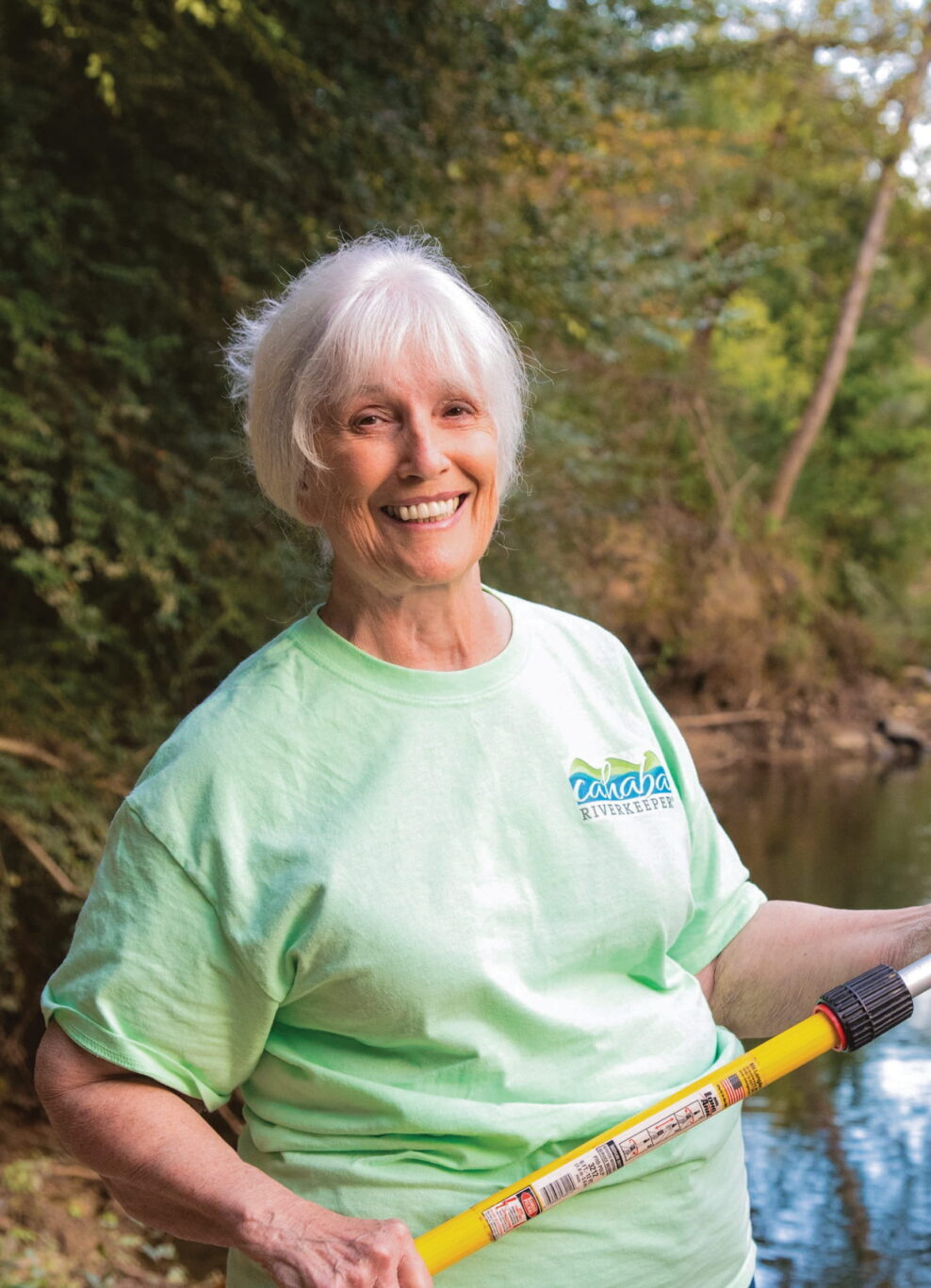
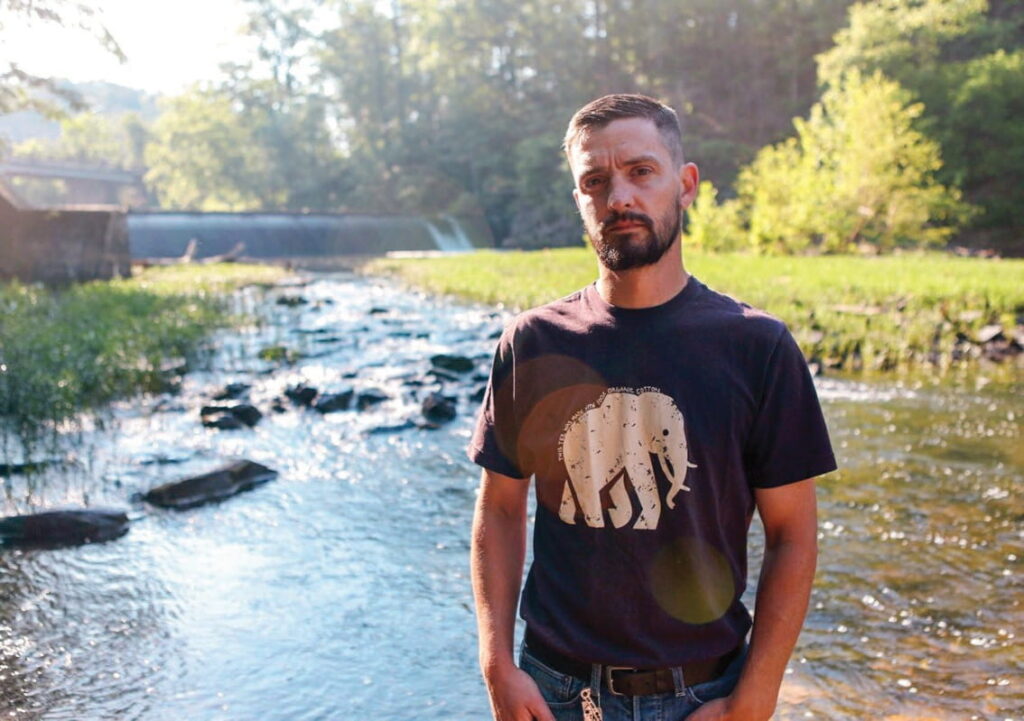
A University of Alabama student spent his free time canoeing and exploring the Cahaba River, and eventually, so taken by the river’s beauty, he began to lead guided tours.
As he became more familiar with the river, it was obvious to him that something was wrong. People would ask him if it was safe to swim or fish in the river and he didn’t have an answer, nor could he find the answers. They just weren’t available, or they didn’t exist.
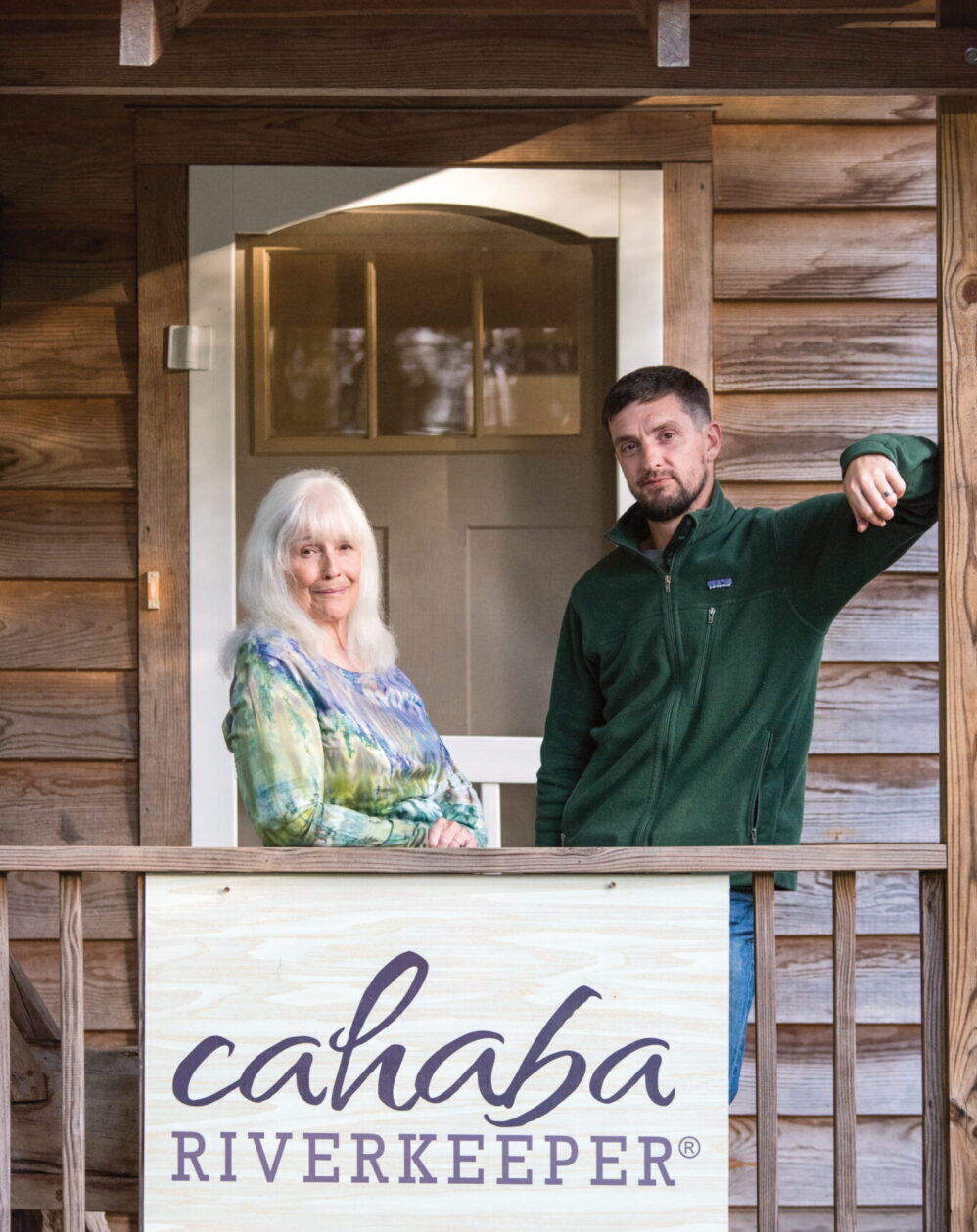
The mother in our story is Myra Crawford, PhD, MPH, a retired clinical research professor and director of research at the Department of Family and Community Medicine at the University of Alabama at Birmingham’s School of Medicine. Dr. Crawford has lived half a mile from the Cahaba River for more than 50 years. The confluence of her retirement, a river in peril, and her love of that river led her to found the Cahaba Riverkeeper, an environmental nonprofit organization. Dr. Crawford understood the importance and urgency of collecting pertinent scientific data about the river’s problems. Making those data available to the public was the first step in calling attention to the plight of the Cahaba and managing its many challenges.
The student guide in this story is David Butler. To find answers to the many questions he had about the river, David first volunteered for Cahaba Riverkeeper, then became a board member, and today serves fulltime as the official Riverkeeper and staff attorney. David’s commitment to the Cahaba inspired him to return to school earning a law degree from the Birmingham School of Law in order to navigate the many legal and bureaucratic issues facing the organization in its advocacy for a healthy river.
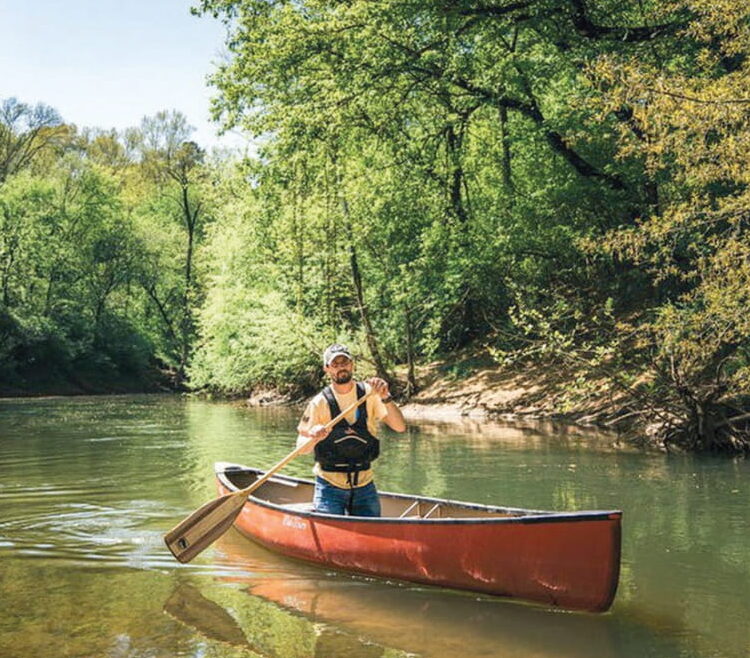
OUR MISSION
The Cahaba Riverkeeper mission is to defend the ecological integrity of the Cahaba River and its watershed, to ensure clean water and a healthy aquatic environment, and to preserve the recreational and visual values of the river basin. The organization’s primary focus is the scientific study of the physical and esthetic properties of the Cahaba and its tributaries.
Cahaba Riverkeeper also investigates and, if necessary, brings to justice lawbreakers who ignore the Clean Water Act and threaten the rights of citizens to enjoy the precious resources the Cahaba makes available.
A community nonprofit organization with public charity status, citizens
of the watershed are engaged to help ensure that the mission is met.
WHAT DO WE DO?
Cahaba Riverkeeper spends most of its time working on the programs it has underway. Being on constant patrol in the watershed allows the Riverkeeper to locate additional insults to the river’s integrity, including bank collapses, sanitary sewer overflows, and other pollution events called in by caring citizens.
When those who break the laws that protect our rivers and the clean water are identified, they are held accountable. Most times, compliance with the law is reached without the necessity of legal action. Cahaba Riverkeeper is not anti business but it is definitely anti-pollution.
SWIM GUIDE
Swim Guide is the Cahaba Riverkeeper’s flagship program since 2014 and serves to answer citizen inquiries about the safety of swimming in the Cahaba River and its major tributaries. Water samples are collected weekly in the summer and analyzed in an on-site laboratory for water quality and bacteria. Findings are posted each week via social and commercial media and the Swim Guide app to educate the public so they may make informed decisions about their health as they go out to swim, boat, and fish.
People usually expose themselves to contaminated water and potential harm because they do not have access to reliable water quality data, or they may not understand the information that has been provided to them. Many contaminated-water-related illnesses are never reported, and it is believed that hundreds of thousands of North Americans get sick or face physical discomfort each year after swimming in polluted water.
Media coverage by area television stations, numerous magazines, newspapers, the Internet, and public comments signifies that Swim Guide
is serving an important community need.

River Cleanups
Cahaba Riverkeeper spends most of its time working on the programs it has underway. Being on constant patrol in the watershed allows the Riverkeeper to locate additional insults to the river’s integrity, including bank collapses, sanitary sewer overflows, and other pollution events called in by caring citizens.
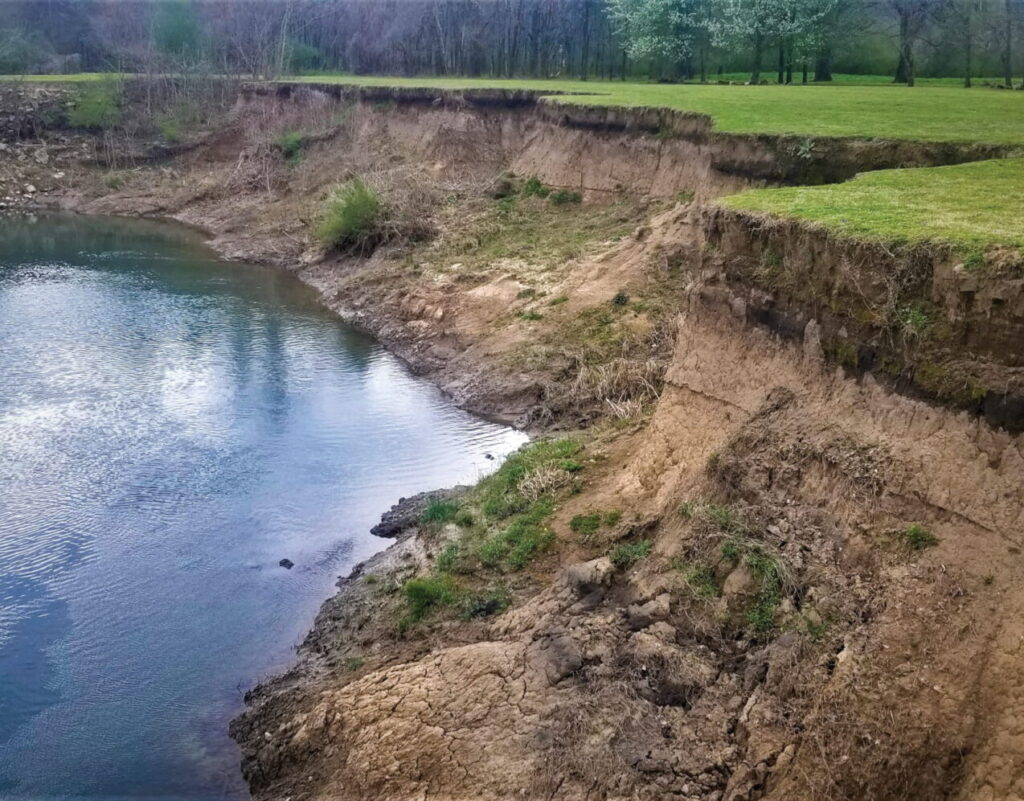
BANK ASSESSMENT OF STABILITY AND SEDIMENT (BASS) PROGRAM
Assessment of the damage to bank stability is critical to long-term ecosystem protection and restoration. Recording the level of sediment accumulated on the river’s bed will provide a baseline of damage. Cahaba Riverkeeper began its Bank Assessment of Stability and Sediment (BASS) program in 2018 using sonar and video technology to chronicle the state of the river and its major tributaries. The BASS program will be the first ever longitudinal survey of the Cahaba channel. The process provides high resolution, geo-referenced longitudinal data critical for stream channel assessments, water quality studies, habitat assessments, and community outreach.
INSPIRING STUDY OF THE ENVIRONMENT
Cahaba Riverkeeper appreciates that the future of our planet rests with the environmental education of our youth. STEM education programs are provided to area middle and high schools, Girl and Boy Scouts, and other youth organizations.
A middle school program of water quality study, based on Swim Guide, has been implemented in the Perry County school system and is offered to other area schools. The object is to bring clean water education to youth and create an understanding of their role in achieving a healthy environment. A partnership is also underway with the McWane Science Center to present programs about the Cahaba in their water exhibit.
Year-round internships are offered to college students and high school seniors to work in Swim Guide and other volunteer services. Interns receive hands-on field and laboratory experiences. AmeriCorps members join the staff each year for field and administrative experiences associated with a nonprofit, water-centric organization.
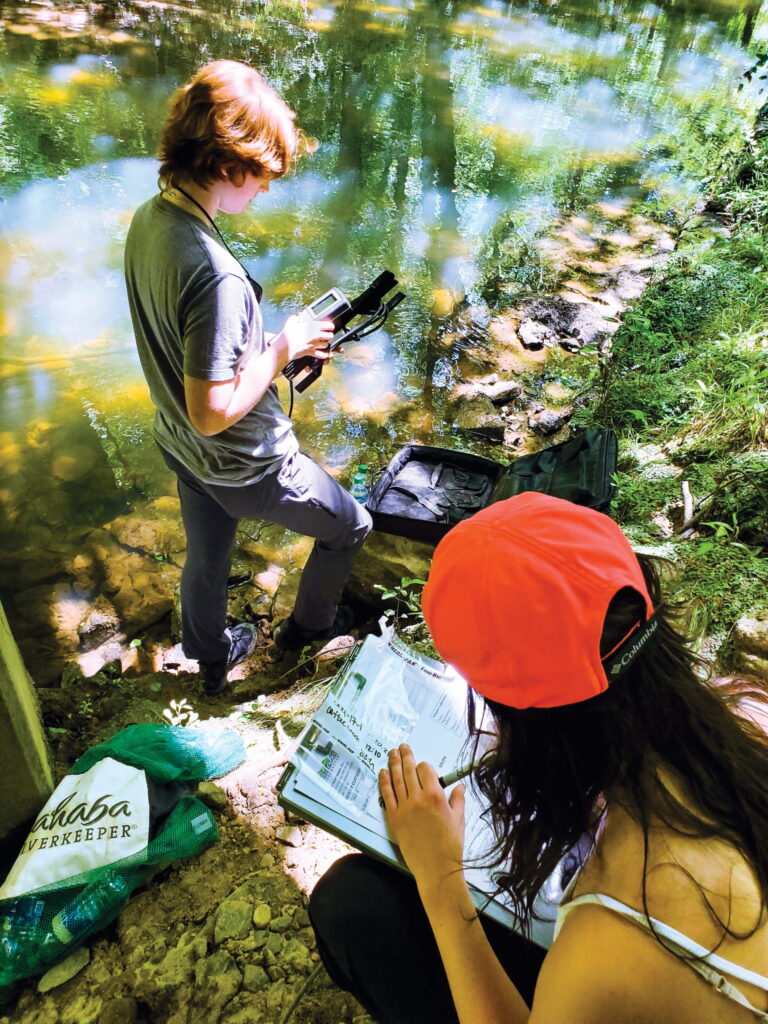
WHY NOW? WHY US?
WHY NOW? Cahaba Riverkeeper needs to expand the scope of its work and that takes more resources. For the good of our neighbors (human and wildlife), we are committed to increasing the number of our sampling sites and expanding our programs. To accomplish this, we must buy new equipment and materials, and increase the number of interns and citizen scientists accommodated each year.
What is our vision for the future?
Cahaba Riverkeeper envisions a world where all individuals from all walks of life are healthy, happy, and deeply connected with and protective of their local environment. We look to a day when the citizens of Alabama can trust that the Cahaba River and their water source is 100% safe and secure.
Cahaba Riverkeeper is the only environmental organization doing scientific and public health education work on the Cahaba. Cahaba Riverkeeper is unique in its dedication to the scientific study of the Cahaba, ensuring that current, evidence-based data are readily available to the public. The use of leading-edge technology and an in-house laboratory supports mission success.

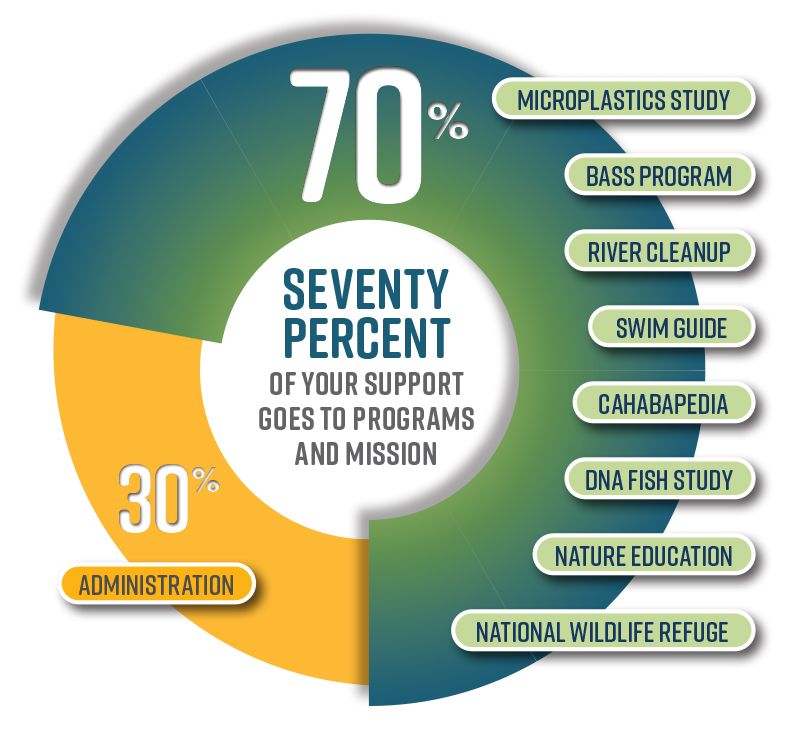
In Alabama, the work of citizen scientists is vital to protect rivers and the people who recreate on them. State agencies either do not have the fiscal resources or the leadership imperative to do so. The Alabama Department of Environmental Management is not required to test inland lakes and streams or at river recreation sites for bacteria, even though hundreds of thousands of Alabamians recreate in local waterways. Motivated citizens are vital to accomplishing what the state will not.
In investing in Cahaba Riverkeeper, constituents can be assured that more than 70% of that support is spent on programs and equipment necessary to meet its mission, not on salaries and marketing.
Cahaba Riverkeeper is proud to have earned the Platinum Seal of transparency; GuideStar’s highest level of recognition. GuideStar is the world’s largest and most reputable source of nonprofit information. By sharing metrics, Cahaba Riverkeeper demonstrates its commitment to transparency by providing
in-depth information about finances, organizational structure, goals, strategies, and progress toward its mission.
WHY DO WE EXIST?
“Believing that you can’t manage what you haven’t measured, our goal is to establish the science-based information about the river necessary to provide guidance to the most appropriate restoration and conservation of the water basin.”
—Dr. Myra Crawford, founder & executive director
Cahaba Riverkeeper was founded in 2009 to defend the ecological integrity of the Cahaba River and to document the story of the waterbasin as it changes and faces the many sources of pollution that threatens its existence.
The Cahaba River stretches some 190 miles across central Alabama and is the primary source of drinking water for the citizens of the greater Birmingham area. Recognized as the most ecologically diverse river in North America, the Cahaba has a fish population greater than any other temperate river of its size. Many of the fish and mussel species are rare and endangered. As the state’s longest free-flowing river, the Cahaba has a watershed of 1,870 square miles and flows through five counties: Jefferson, Shelby, Bibb, Perry, and Dallas.
Alabama is the only state in the South East with no comprehensive water plan to monitor and manage withdrawals, protect flows, manage interbasin transfers, and conserve water resources. Alabamians have no protection for their water resources. Cahaba Riverkeeper believes citizens deserve science-based information to make informed decisions about activities for their families and themselves that affects their health and have the right to demand clean water for personal use and recreation.

CREATING CONNECTIONS
Cahaba Waterkeeper cherishes its association with other environmental organizations that share in the mission of protecting the health of the planet and all its inhabitants.
WATERKEEPER ALLIANCE Cahaba Riverkeeper is a licensee of the global Waterkeeper Alliance, the largest and fastest growing nonprofit focused solely on clean water. The Waterkeeper Alliance has more than 350 members in 45 countries with over a million volunteers and supporters worldwide.
WATERKEEPERS ALABAMA Waterkeepers Alabama is a consortium of the 10 waterkeepers whose rivers flow in Alabama. Watershed protection is their primary shared focus.
THREE RIVERS PROJECT Three important, biodiverse, and environmentally challenged rivers flow through central Alabama and touch the lives of millions of people as sources of recreation for swimming, boating, and sport and subsistence fishing. The Cahaba, Black Warrior, and Coosa Rivers also deliver drinking water to one-fourth of the state’s population, and all are imperiled, especially by stormwater damage, sediment, and bacteria. The Three Rivers Project (TRIP) is an active alliance among these three Waterkeepers for programs and capacity building.
HOW CAN I HELP?
“In an age when man has forgotten his origins and is blind even to his most essential needs for survival, water along with other resources has become the victim of his indifference.”
—Rachel Carson, Silent Spring
HELP US MOVE FORWARD
Cahaba Riverkeeper accomplishes its ambitious programs with limited resources and a small staff. Think of what we could accomplish with your donation and support.
MAKING AN IMPACT
THE CAHABA RIVER NATIONAL WILDLIFE REFUGE
The Cahaba River National Wildlife Refuge was established in 2002 for the purpose of protecting and managing a unique section of the Cahaba River and land adjacent to it. Three and one-half miles of the Cahaba lie within the Refuge.
The Refuge is home to 8 federally endangered and 5 federally threatened species, as well as 2 federal species of concern, including the Cahaba shiner, goldline darter, round rocksnail, and cylindrical lipoplex snail. The oblong rocksnail, once believed to be extinct, was recently found in the area.
Many migratory birds flock to the Refuge. Kentucky hooded and prairie warblers are known to breed on the uplands adjacent to the Cahaba while prothonotary and yellow-throated warblers can be found in the Refuge’s hardwood forests.
The Refuge supports 64 rare and imperiled plant and animal species, 13 of which are found nowhere else in the world. The rolling uplands surrounding the river are forested with mountain longleaf and loblolly pines. Mixed upland hardwood species line ravines
and the river’s edge.
The largest known stand of the shoals lily in Alabama (known locally as the Cahaba lily) also occurs within the Refuge. In May and June when this beautiful plant blooms, people come from across the region to view this magnificent display of nature. The annual Cahaba Lily Festival in May draws thousands of visitors to the area.
Cahaba Riverkeeper works as a “full and valued partner” of the U.S Fish and Wildlife Service to conduct routine patrols and lead cleanups and restoration projects in the Refuge and Bibb County, often with the Friends of the Cahaba River National Wildlife Refuge. Working with USFWS, Cahaba Riverkeeper is transplanting lily seeds to promote growth in bare areas.


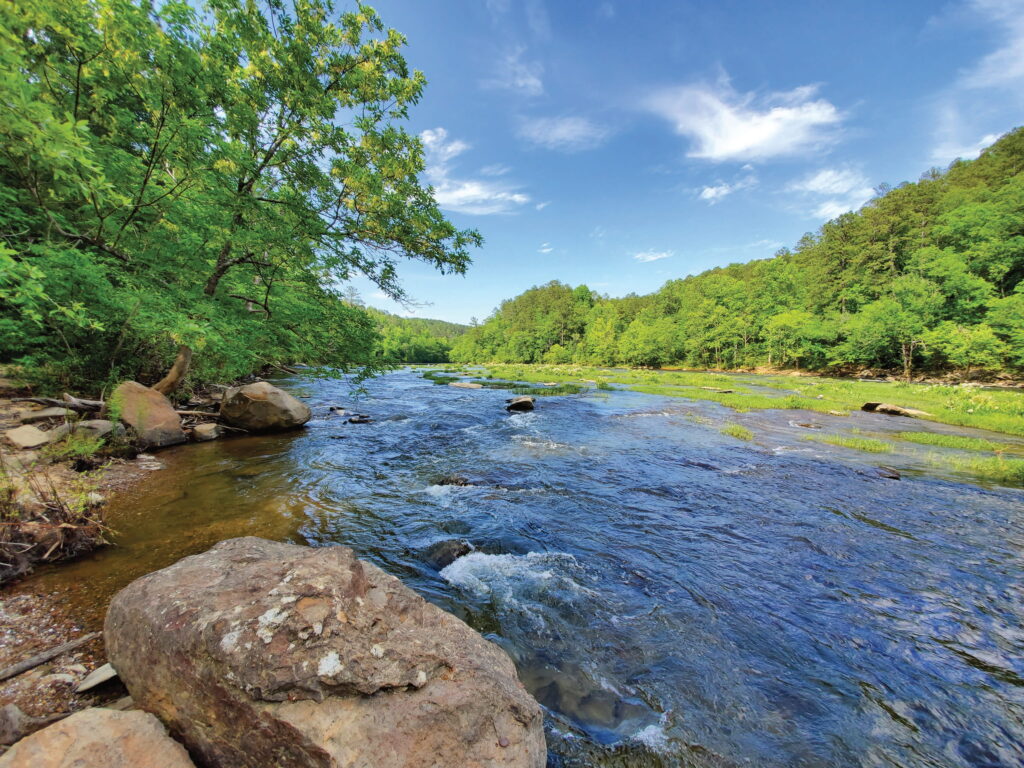
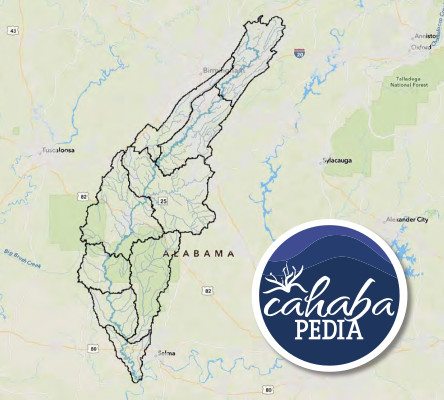
CAHABAPEDIA:
A CAHABA RIVERKEEPER LEGACY PROGRAM
Cahaba Riverkeeper has created Cahabapedia, a dynamic geographic information system (GIS) designed to provide a permanent and easily accessible digital map and data repository of geographically referenced information on the Cahaba River and its tributaries. Cahabapedia grew from the need for an easy-to-find source of evidence-based data in order to understand the location of significant infrastructure and points of interest and the dynamics of changes occurring to the Cahaba water basin from manmade and natural issues.
Cahaba Riverkeeper’s experience during the 2016 Colonial Pipeline gasoline spill near the Cahaba revealed that vital information about the river is scattered among many federal, state, and local organizations and took valuable time and resources to collect during a crisis. Cahabapedia was conceived from that event, in tandem with planning for a Bank Assessment of Stability and Sediment (BASS) study to begin to collect video and sonar information about the river. Those records, as well as data from the Swim Guide program, will provide years of water quality and bacteriological data on recreational and access points along the river and its major tributaries.
The project, which is in development and will be available to the public, will invite area businesses, the scientific community, and citizens to submit ideas, photographs, scientific data, and historical information for inclusion.
STUDY OF MICROPLASTICS
Cahaba Riverkeeper began its microplastics study in 2019 led by Shaun Crawford, PhD, MSPH, Cahaba Riverkeeper’s senior scientist. The pilot study was launched to determine if microplastic pollution was evident in the Cahaba. The results indicated that there was, indeed, substantial microplastic pollution in the Cahaba. In 2020, a collaboration was begun with the Department of Chemistry at the University of Alabama at Birmingham to verify the findings and to provide more detailed study of the microplastics found. Josh Forakis, a post-doctoral student in the department who is conducting those studies, also brings dozens of UAB chemistry students to the river each year to take samples for their class projects, using the Cahaba Riverkeeper laboratory and office for support.
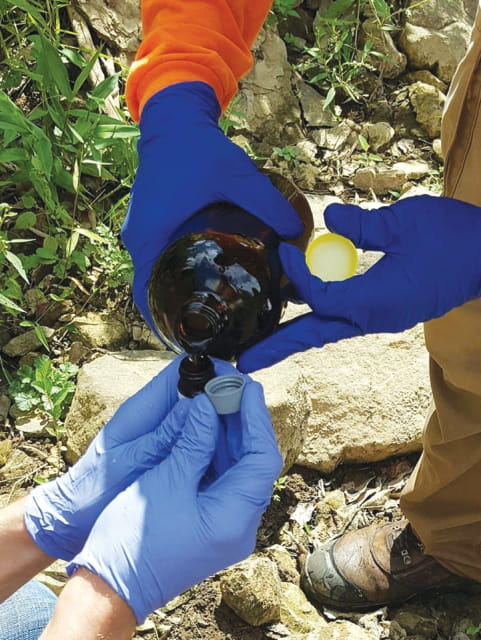

ENVIRONMENTAL DNA FISH STUDY
The Cahaba River is reported in the general literature to have more than 130 species of fish, but a current record of what remains does not exist. More recent studies of the watershed have documented the decline in pollution-intolerant fish species and an increase in pollution-tolerant fish species. Endangered species such as the gold-line darter and the Cahaba shiner have been especially adversely affected.
After extreme droughts, an excess of stormwater runoff, and bank collapses covering habitat with sediment over the twenty years since the EPA study was conducted, what species are still present? The quest to determine how many and which species are still present needed to be undertaken. The University of West Alabama (UWA) had developed an environmental DNA (eDNA) research protocol but lacked a consistent source of samples from a large part of the river and its tributaries.
In 2019, Cahaba Riverkeeper began the eDNA fish species study of the Cahaba and its major tributaries in collaboration with UWA, collecting more than 350 water samples each year for eDNA testing. The UWA team analyzes the water collected to determine which species of fish have deposited their DNA in the water.